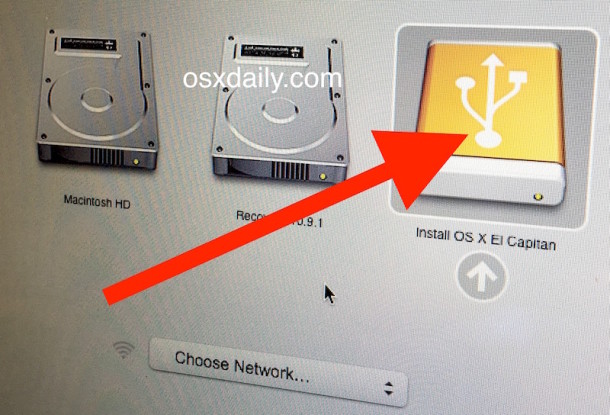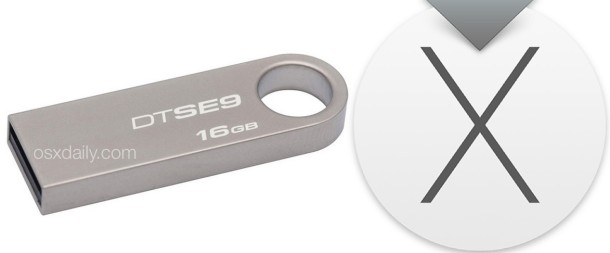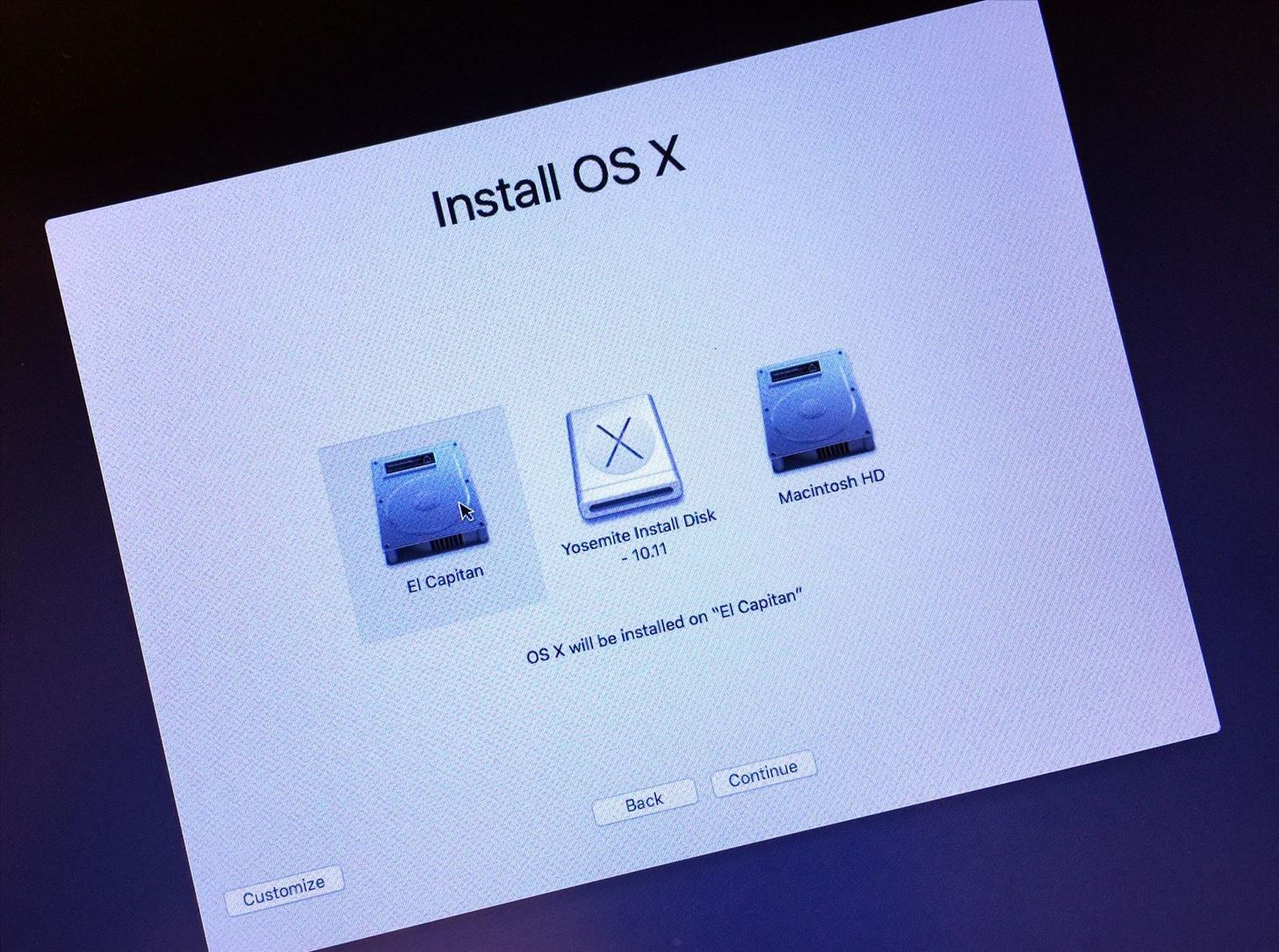As has been the case for the last few releases of OS X, the easiest method to make a USB install drive is with the free program, Diskmaker X. Microsoft office 2014 for mac torrent download. It’s been updated today to support El Capitan. I need to dmg file to write usb with transmac bot when i bought max os x el capitan’ send me a dvd 9,in dvd9 a file with rdr format and a program to write rdr files.in rdr file a part with clover ver 2.3k and install el capitan partition.i write in 16gb usb and connect it in back panel of pc in usb 2.0 work and i go to clover and set boot.
Confirm that the USB drive will lose it’s data and enter the Admin password when asked; Disk Utility will now create a bootable OS X Mountain Lion installer drive out of USB drive using the disk image, this can take a little while depending on how fast the drive and Mac are but 20-30 minutes isn’t unusual. Better support under Linux through PlayOnLinux software allowing easy install/uninstall. Improved OS X User Interface and compatibiltiy with OS X 10.11 El Capitan. Updated license usage. BugFix: - Improved Memory usage and minor optimization and improvements. Fixed various minor bugs - Fixed minor bug when saving compressed TIFF files.
These advanced steps are primarily for system administrators and others who are familiar with the command line. You don't need a bootable installer to upgrade macOS or reinstall macOS, but it can be useful when you want to install on multiple computers without downloading the installer each time.
El Capitan Usb Installer Download
What you need to create a bootable installer
- A USB flash drive or other secondary volume formatted as Mac OS Extended, with at least 14GB of available storage
- A downloaded installer for macOS Big Sur, Catalina, Mojave, High Sierra, or El Capitan
Download macOS
How to make El Capitan install.dmg file bootable. Download BurnCDCC ( 2. Run BurnCDCC and insert a blank DVD (could be dual layer if single layer is not enough) 3. Click 'Browse' button and select extracted ISO file to burn. What to Know Download El Capitan from Apple and quit the installer. Connect and name a flash drive. Launch Terminal. Copy and paste the command given below into Terminal. Enter the Mac password and press Enter. Wait while Terminal erases and copies the files to the USB drive. When the process is. Apr 27, 2021 On a Mac that is compatible with El Capitan, open the disk image and run the installer within, named InstallMacOSX.pkg. It installs an app named Install OS X El Capitan into your Applications folder. You will create the bootable installer from this app, not from the disk image or.pkg installer. Use the 'createinstallmedia' command in Terminal.
- Download: macOS Big Sur, macOS Catalina, macOS Mojave, or macOS High Sierra
These download to your Applications folder as an app named Install macOS [version name]. If the installer opens after downloading, quit it without continuing installation. To get the correct installer, download from a Mac that is using macOS Sierra 10.12.5 or later, or El Capitan 10.11.6. Enterprise administrators, please download from Apple, not a locally hosted software-update server. - Download: OS X El Capitan
This downloads as a disk image named InstallMacOSX.dmg. On a Mac that is compatible with El Capitan, open the disk image and run the installer within, named InstallMacOSX.pkg. It installs an app named Install OS X El Capitan into your Applications folder. You will create the bootable installer from this app, not from the disk image or .pkg installer.

Use the 'createinstallmedia' command in Terminal
- Connect the USB flash drive or other volume that you're using for the bootable installer.
- Open Terminal, which is in the Utilities folder of your Applications folder.
- Type or paste one of the following commands in Terminal. These assume that the installer is in your Applications folder, and MyVolume is the name of the USB flash drive or other volume you're using. If it has a different name, replace
MyVolumein these commands with the name of your volume.
Big Sur:*
Catalina:*
Mojave:*
High Sierra:*
El Capitan:
* If your Mac is using macOS Sierra or earlier, include the --applicationpath argument and installer path, similar to the way this is done in the command for El Capitan.
After typing the command:
- Press Return to enter the command.
- When prompted, type your administrator password and press Return again. Terminal doesn't show any characters as you type your password.
- When prompted, type
Yto confirm that you want to erase the volume, then press Return. Terminal shows the progress as the volume is erased. - After the volume is erased, you may see an alert that Terminal would like to access files on a removable volume. Click OK to allow the copy to proceed.
- When Terminal says that it's done, the volume will have the same name as the installer you downloaded, such as Install macOS Big Sur. You can now quit Terminal and eject the volume.
Make El Capitan Usb Installer

Use the bootable installer
Determine whether you're using a Mac with Apple silicon, then follow the appropriate steps:
Apple silicon
- Plug the bootable installer into a Mac that is connected to the internet and compatible with the version of macOS you're installing.
- Turn on your Mac and continue to hold the power button until you see the startup options window, which shows your bootable volumes and a gear icon labled Options.
- Select the volume containing the bootable installer, then click Continue.
- When the macOS installer opens, follow the onscreen instructions.
Intel processor
- Plug the bootable installer into a Mac that is connected to the internet and compatible with the version of macOS you're installing.
- Press and hold the Option (Alt) ⌥ key immediately after turning on or restarting your Mac.
- Release the Option key when you see a dark screen showing your bootable volumes.
- Select the volume containing the bootable installer. Then click the up arrow or press Return.
If you can't start up from the bootable installer, make sure that the External Boot setting in Startup Security Utility is set to allow booting from external media. - Choose your language, if prompted.
- Select Install macOS (or Install OS X) from the Utilities window, then click Continue and follow the onscreen instructions.
Learn more
El Capitan Usb Install Cannot Be Verified
For more information about the createinstallmedia command and the arguments that you can use with it, make sure that the macOS installer is in your Applications folder, then enter the appropriate path in Terminal:
- Big Sur: /Applications/Install macOS Big Sur.app/Contents/Resources/createinstallmedia
- Catalina: /Applications/Install macOS Catalina.app/Contents/Resources/createinstallmedia
- Mojave: /Applications/Install macOS Mojave.app/Contents/Resources/createinstallmedia
- High Sierra: /Applications/Install macOS High Sierra.app/Contents/Resources/createinstallmedia
- El Capitan: /Applications/Install OS X El Capitan.app/Contents/Resources/createinstallmedia
El Capitan Usb Installer Torrent
A bootable installer doesn't download macOS from the internet, but it does require an internet connection to get firmware and other information specific to the Mac model.

I am salvaging a mid 2013 MacBook Air 11' that was discarded with a broken screen backlight due to beverage spill and missing its SSD. (I have a very tiny budget right now so I'm only spending on more expensive items when my testing shows the machine might work well.)
Can't Install El Capitan From Usb
I got the Apple Store to test the hardware then tested the computer myself by taking about two days to install OS X from one USB 2.0 flash drive to another USB 2.0 flash drive using an external display.
It seemed to work quite well other than that it ran at about 1% the speed of a normal Mac for anything that required disk access. This made it hard to test in any depth as problems could easily be due to OS X internal timeouts.
I have now purchased a USB 3.0 external hard drive and knowing how slow USB 2.0 flash drives are to install from and to, I'm hoping to use the fast external hard drive for both, but I'm not sure whether this is possible or how.
The external drive happened to come pre-formatted for Mac with two partitions, which to seems ideal.
Can I just copy the contents of the El Capitan bootable installer USB to one of the partitions? I fear I may need to copy it as a drive/partition rather than as a file or folder, since it must be bootable. Does such a copy require special software?
I need to ask the experts here without being able to experiment since I'm unable to justify the purchase price of a magsafe 2 power supply until I'm confident the machine will work well. I am able to borrow a power supply only occasionally from friends.
Puppy Linux Bootable Usb Drive
I realize doing an Internet OS restore via Wi-Fi is another possibility but the Wi-Fi I have access to is both slow and behind a captive portal. So for this question I'm not pursuing that option thank you.